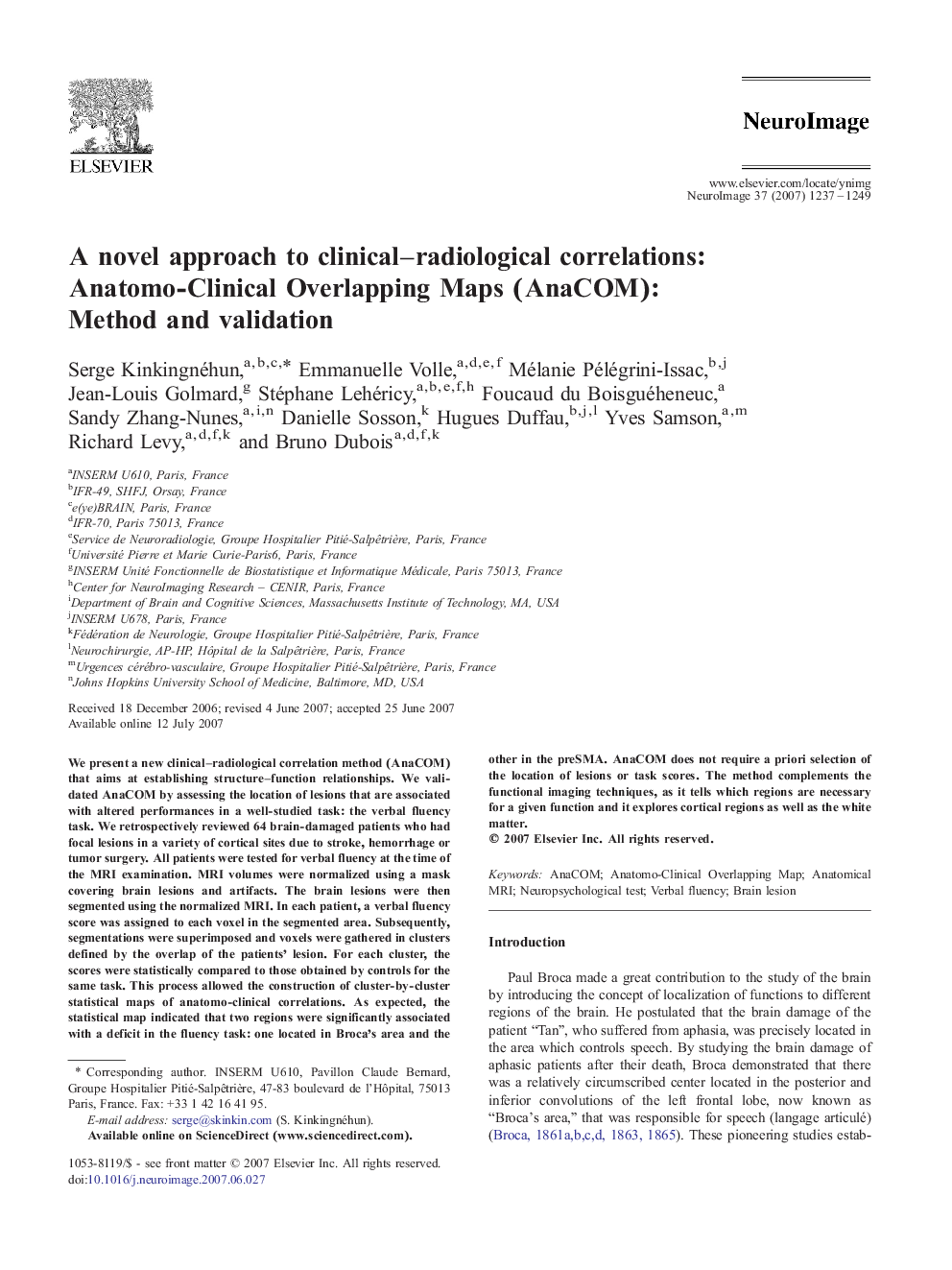| Article ID | Journal | Published Year | Pages | File Type |
|---|---|---|---|---|
| 3073494 | NeuroImage | 2007 | 13 Pages |
We present a new clinical–radiological correlation method (AnaCOM) that aims at establishing structure–function relationships. We validated AnaCOM by assessing the location of lesions that are associated with altered performances in a well-studied task: the verbal fluency task. We retrospectively reviewed 64 brain-damaged patients who had focal lesions in a variety of cortical sites due to stroke, hemorrhage or tumor surgery. All patients were tested for verbal fluency at the time of the MRI examination. MRI volumes were normalized using a mask covering brain lesions and artifacts. The brain lesions were then segmented using the normalized MRI. In each patient, a verbal fluency score was assigned to each voxel in the segmented area. Subsequently, segmentations were superimposed and voxels were gathered in clusters defined by the overlap of the patients' lesion. For each cluster, the scores were statistically compared to those obtained by controls for the same task. This process allowed the construction of cluster-by-cluster statistical maps of anatomo-clinical correlations. As expected, the statistical map indicated that two regions were significantly associated with a deficit in the fluency task: one located in Broca's area and the other in the preSMA. AnaCOM does not require a priori selection of the location of lesions or task scores. The method complements the functional imaging techniques, as it tells which regions are necessary for a given function and it explores cortical regions as well as the white matter.
